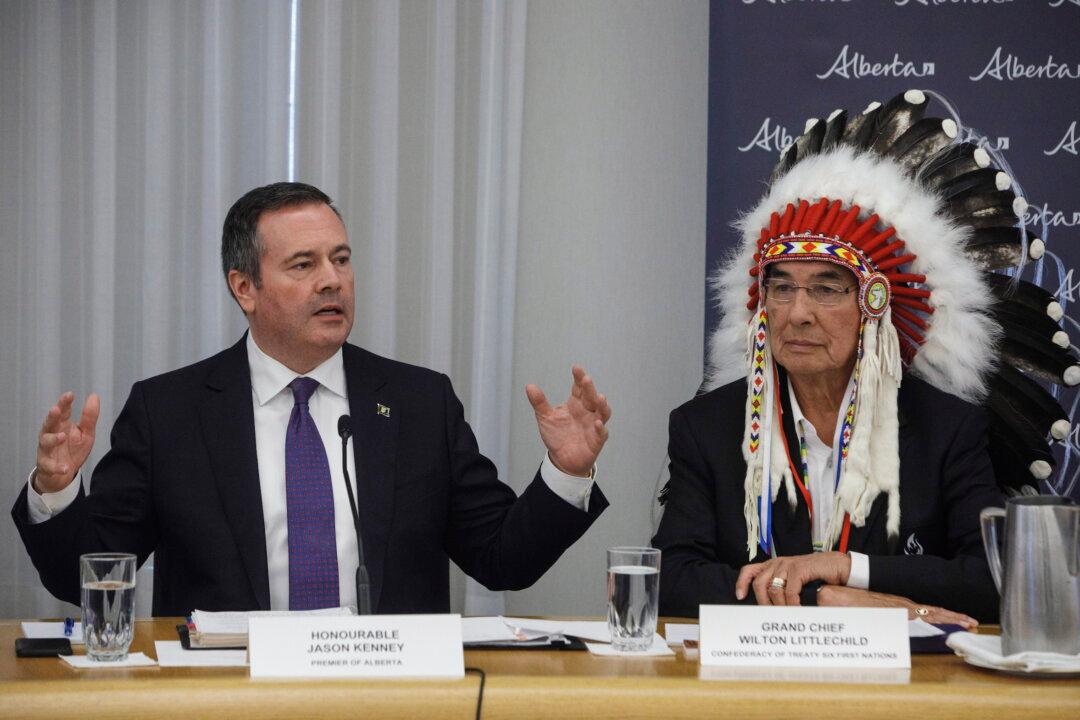News Analysis
OTTAWA—Myths are being dispelled about Indigenous people and their relation with the oil and gas sector. There are plenty of positive stories to be told about partnerships and development that should garner more media attention than negative ones about conflicts and protests, according to a panel of experts on Indigenous people and the oil and gas industry in Canada hosted by the Macdonald-Laurier Institute (MLI) on Sept. 19.
Many Indigenous communities grapple with terrible poverty and poor infrastructure, but some are gaining in prosperity. For those fortunate communities, the challenge has gone from managing poverty to managing prosperity.
The oil and gas sector represents a model for how industry and Indigenous people can work together to support Indigenous communities and their economic development, says Brian Schmidt, president and CEO of Tamarack Valley Energy.
Schmidt says he has developed very deep relationships with First Nations people and has been awarded the title of honorary chief by the Blood Tribe of Southern Alberta.
“In reality there’s a cultural shift in the industry in the past decade for how we see our relationship and our responsibilities with these [Indigenous] communities,” Schmidt said while speaking on the panel.
The panellists discussed the challenges facing Indigenous people that arise from long-standing stereotypes, parochial government policy, and media bias. But one thing is crystal clear—Indigenous people must be recognized as partners in resource development.
Development of the resource sector brings jobs to Indigenous communities These are relatively well-paying jobs considering the education required. The trickle-down effects include community development and participation in the formal economy in rural locations.
The panel’s consensus is that Ottawa’s approach to consultation with Indigenous people was myopic—it has focused on supplying grants and social programs instead of empowering Indigenous people—as if Ottawa knows best. In addition, it’s crucial to recognize that Indigenous Peoples in Canada comprise three distinct groups—First Nations, Inuit, and Métis—each of which consists of many communities or nations. For example, there are more than 630 First Nation communities across Canada representing over 50 First Nations.
“Self-determination needs to have economy to go with it,” said Tabatha Bull, COO of the Canadian Council for Aboriginal Business (CCAB) who is Anishinaabe and a member of Nipissing First Nation near North Bay, Ontario.
The federal department of Crown-Indigenous and Northern Affairs Canada did not respond by press time to an email and voicemail requesting comment for publication.
Not helping is the mass media paying far more attention to disagreements between First Nations and the government or industry, but those situations are actually not the norm.
“Media does grab on to the opposers more than celebrating the good partnerships and projects that are out there,” Bull said.
Schmidt says the First Nations who are against resource development are in the minority and that the pro-development chiefs are becoming more vocal in the newspapers and media.
Bull is hoping to see major improvements in Indigenous procurement by government. She stated that the CCAB calculated that Indigenous businesses could supply at least 24.2 percent of federal government spending annually, based on 2017 figures, but the government has never sent more than 1 percent their way. In contrast, the private sector is doing much more than that.
Suncor alone has spent $1.7 billion more on Indigenous business than the combined spending of the Canadian government since 1996, Schmidt said.
Ownership Stakes
More and more, First Nations are proving to be successful and capable business people. Taking ownership stakes in large infrastructure projects on their lands has multiple benefits, but access to capital at competitive rates remains a challenge. Indigenous people are not simply there for subcontracting, labour, and the informal economy of hunting, trapping, and fishing.
The boldest example of Indigenous people trying to take charge of their future is with Project Reconciliation. The goal is to purchase 51 percent of the Trans Mountain Pipeline, which the federal government owns after buying it for $4.5 billion from Kinder Morgan.
The initiative aims to operate like Norway’s sovereign wealth fund, which has grown to have assets in excess of US$1 trillion, and is like an endowment that supports expenses in perpetuity.
Project Reconciliation does not intend to use a dime of taxpayer money for its ownership stake in Trans Mountain.
Schmidt explains that with pipelines, Indigenous owners can charge a fee for their use. This revenue stream can attract private equity funding. He says 35 First Nations were going to participate in equity ownership of the Northern Gateway pipeline. It’s a win-win for the industry, which doesn’t want to take that much risk with owning a pipeline, and so they’d rather pay recurring fees.
Suncor’s $500 million tanker farm (oilsands storage facility) involves two First Nations that acquired a 49 percent share in 2017.
It’s commonplace to hear of $100 million and even $500 million projects, says Ken Coates, director of the International Centre for Northern Governance and Development at the University of Saskatchewan. He adds that the private sector is becoming more comfortable investing in these types of arrangements with First Nations.





